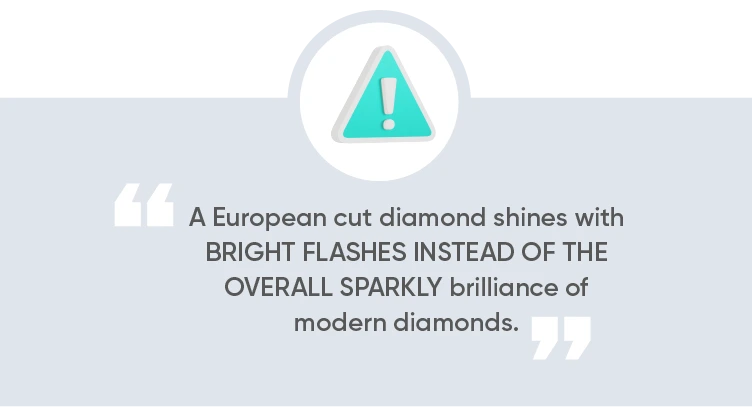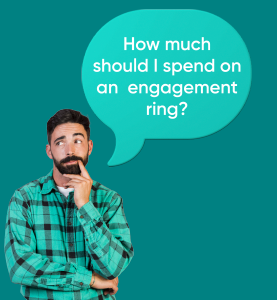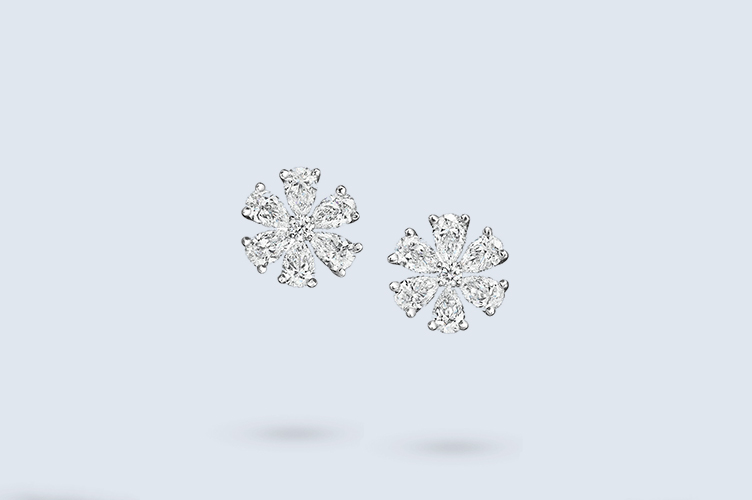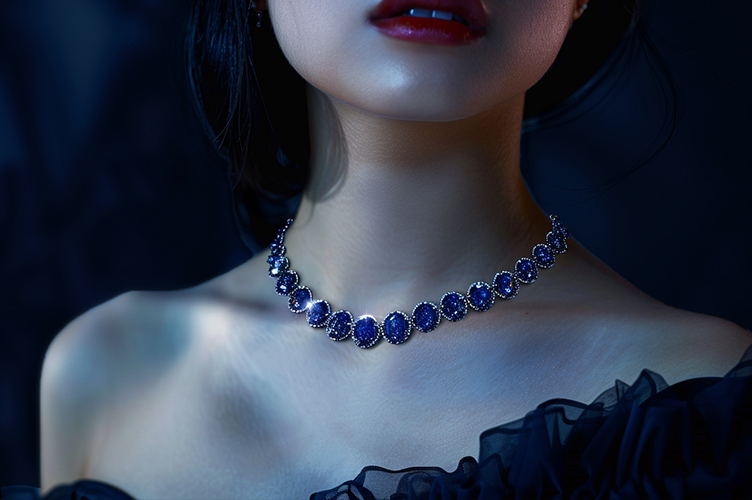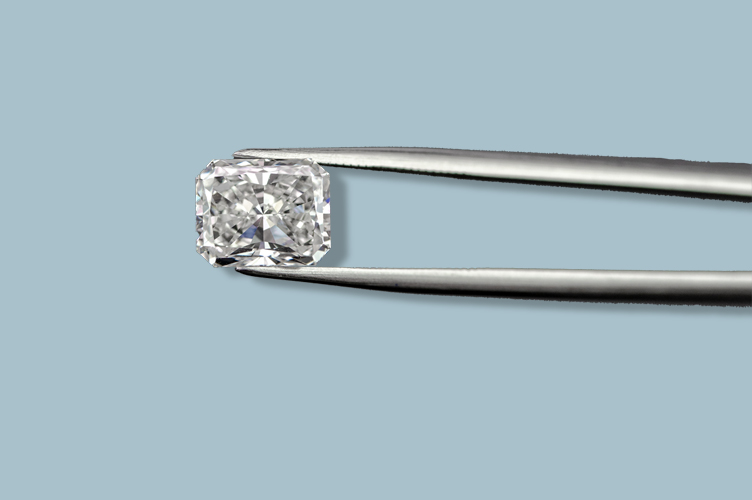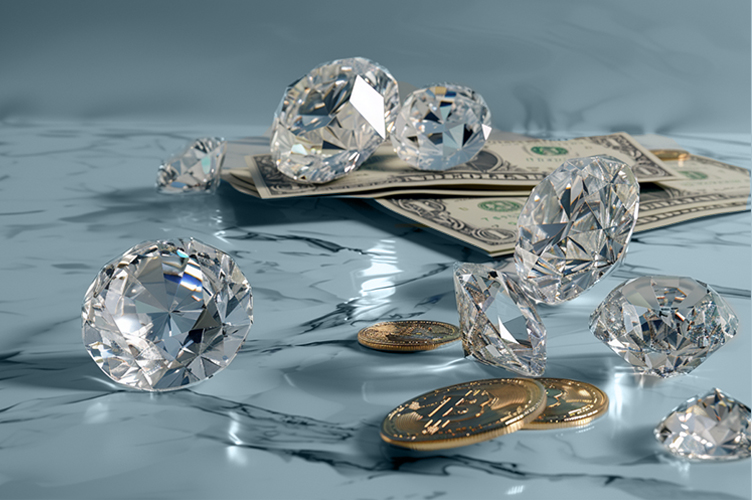Are you destined to wear a vintage engagement ring steeped in history? Old European cut diamonds were the standard cut from the Victorian era through the Art Deco 1920s. Round and designed to sparkle, this style would eventually go on to become the modern round brilliant cut that’s popular today.
What You Will Learn
- What are old European cut diamonds?
- How to Identify an Old European Cut diamond?
- Are brilliant cut diamonds better than old European cut diamonds?
- What Are Conflict-Free Diamonds?
- Which celebrities have old European cut engagement rings?
- Are old European cut diamonds valuable?
- How do I buy an engagement ring with a European cut diamond?
- What kind of insurance do I need for an antique diamond?
What are old European cut diamonds?
You probably know a vintage ring when you see one, but what is a European cut diamond? Sometimes called an old English cut diamond, this diamond-cutting technique originated in Europe in the late 1800s. Without the technology of today, diamond cutters worked by hand to cut round, multi-faceted diamonds out of rough stone.
The old European cut was a hit that stayed popular and paved the way for the invention of the modern brilliant cut. Today’s modern cuts use technology to make everything about the Euro cut diamond precise and measurable.
Both styles are round in shape and contain lots of tiny facets to reflect light and maximize sparkle.
Just remember, European cut diamonds are much more imperfect since they were cut by hand. Their facets are bigger and not as precise, and they sparkle differently too. Back then, diamond cutters cut stones to make them sparkle under candlelight and gas lamps. A European cut diamond shines with bright flashes instead of the overall sparkly brilliance of modern diamonds.
How to Identify an Old European Cut diamond?
The visible culet is the first feature to look for when recognizing an old European cut. The prominent culet, which can be seen when looking through the top of the stone, is the distinguishing feature of these diamonds. In reality, you can see the culet on diamonds over 1 carat without a loupe.
There are several other methods to identify an Old European cut diamond besides the culet. A small table, which is the diamond’s top facet, is one such characteristic. Another distinguishing feature is a glazed and opaque girdle that encircles the diamond between the crown and pavilion. This style of girdle is frequently associated with an older diamond.
Furthermore, small side cracks in the girdle suggest that the diamond is old. The larger facets that are “less splintered” than modern brilliant cut diamonds are another distinguishing trait. These distinguishing characteristics distinguish an Old European cut diamond from its contemporary counterparts, such as round brilliant cut diamonds.
Finally, the Old European cut is distinct from the old mine cut diamond, which is an earlier form of the round brilliant cut diamond. The Old European cut is round with a higher crown, a smaller table, and a bigger culet, whereas the Old Mine cut is more square with a higher crown, a smaller table, and larger facets. Identifying these subtle differences as a jewelry expert is what makes the work both difficult and rewarding.
Are brilliant cut diamonds better than old European cut diamonds?
The brilliant cut round diamonds of today adhere strictly to the 4Cs- color, cut, clarity, and carat weight. Their 58 facets are cut with precision and the result is an optimized diamond designed to sparkle brilliantly.
Beyond the 4Cs: How other diamond variables work
But that doesn’t mean they’re for everyone. There’s something perfectly-imperfect about every old Euro cut. Their hand-cut character makes each diamond one-of-a-kind.
Another upside to old European cuts? They’re always an ethical choice. When you buy an antique ring, its metals and stones are essentially “recycled” into something brand new to you.
| Old European Cut Diamond | Modern Round Brilliant Diamond cut |
| Round shape but naturally imperfect | Perfectly round shape |
| Larger hand-cut facets | Small precise facets |
| Firey candlelit glow | High sparkle and brilliance |
| Ethically sourced since they’re “recycled” antiques | Can be ethically sourced but aren’t always |
What Are Conflict-Free Diamonds?
Who should wear an old European cut diamond ring?
Do you appreciate antiques or vintage styles? Then you should absolutely look at old European cut diamond engagement rings. You can find fabulous Art Deco or Victorian settings that stand the test of time and will continue to be treasured heirlooms.
Do you like to be original? Then stand out with a ring that’s one-of-a-kind. When you buy an old European cut diamond engagement ring, you won’t meet anyone else with the same looking ring.
TIP: The timeless round shape looks good on any hand, but if you want something less circular but still vintage, you may want to research old mine cut diamonds.
Suggested Read: What Are Conflict-Free Diamonds? | BriteCo Jewelry Insurance
Which celebrities have old European cut engagement rings?
Old European cut rings aren’t widespread the way modern round and oval cuts are these days. But there are a few celebs known for their antique rings.
- It’s rumored Natalie Portman wanted a highly ethical option for her engagement ring and appears to wear a gorgeous old European cut engagement ring.
- Mary Kate Olsen wears a vintage Cartier ring with an antique diamond
- Actress Emily Blunt wears an antique diamond in a new but vintage-inspired setting in recycled platinum.
Are old European cut diamonds valuable?
The Old European cut diamond value is high, and they can sometimes be worth more than the more perfect modern cuts of today. The demand for old European diamonds also continues to increase, and since there are only a limited number of old European diamonds out there, the European cut diamond value will continue to grow too.
How do I buy an engagement ring with a European cut diamond?
Buying an engagement ring with an old European cut diamond will take a little more thought than simply getting the best of the 4C’s on your budget. These diamonds might receive poor quality grades based on today’s standards, but those standards weren’t designed for antique diamonds. Finding a jeweler who specializes in vintage jewelry is the first step. You’ll want to take a look at different styles in person and observe the diamonds under different lighting conditions.
But remember, you’re buying a one-of-a-kind piece of history that carries its own unique story – and that alone is uniquely beautiful!
To learn more about purchasing old European cut diamonds, visit https://www.gemsociety.org/article/old-european-cut-diamonds/
What kind of insurance do I need for an antique diamond?
To protect any fine jewelry from loss, theft, damage, and mysterious disappearance, you need specialized jewelry insurance.
BriteCo’s affordable policy covers up to 125% of your ring’s appraised value and its fast and easy to get started.
Get an instant free quote for an affordable monthly or annual payment. Then all you have to do is upload the required documentation and you’ll be covered in minutes.
Insurance for engagement rings is a must. And there’s finally an affordable and easy way to get comprehensive jewelry insurance.
Also Check:
How Are Diamonds Cut? | BriteCo Jewelry Insurance
Exploring Types of Diamond Settings for Engagement Rings and Wedding Band
Is a Square Cut Diamond Right for My Engagement Ring?
What to Know Before Choosing a Ring With a Solitaire Cut Diamond


